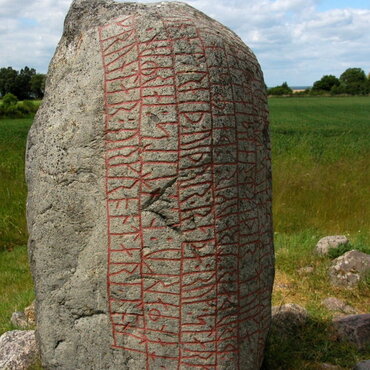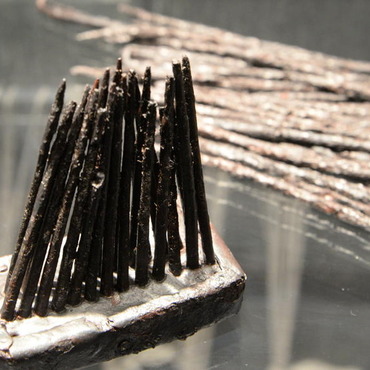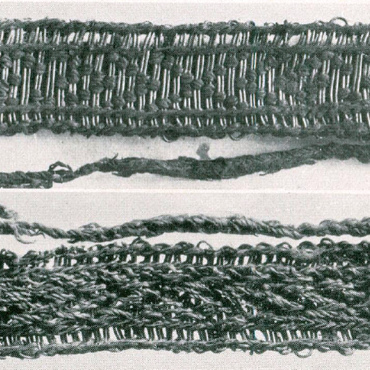Background & Research
Own articles published by members of Vidars Horde

Sources
We use different kinds of sources for our background research. Some are of pure academic nature, others derive from the experiences of others or our own wild speculations.

"Virtual excavations" in Birka
A review on the current state of geophysical prospections on Björkö.

Wool combs in the Viking Age - the evidence
We write a lot about wool combs and at the markets, we explain and demonstrate how they were used. But what is the actual evidence for those tools?

Men's clothing: the cloak
It doesn't matter whether it is for protection against wind and rain or for displaying one's wealth and status: The cloak is one of the most important parts of a man's dress in early medieval Europe. Direct archaeological finds, however, are rare and usually quite small. The following article explores some of the archaeological evidence from the Viking Age. It is most certainly not comprehensive, but gives a rough overview over some of the most important finds.

Men's tunic from Birka
There are tunics and there are tunics. Some tunic remains from the Swedish trading metropolis of Birka show a certain, characteristic kind of decoration which might reflect its influences from foreign countries. In this article, some archaeological evidence from the "Birka tunics" has been collected. The content has been structured according to the questions: What kind of fabrics do we have? What kind of decoration has been used on the tunics? Where on the body where the decorations located?

Viking Age yarn winders / niddy noddies: The archaeological finds
The niddy noddy finds from Hedeby and Oseberg are described here.

The glass beakers from the Birka graves
It's fancy and the beer stays sparkly, especially compared to when filled in ceramic cups: Drinking glass is popular among Living History Vikings. Some of the most common replicas that can be seen at events are the ones from the Birka graves, fitting the wealthy warrior with silken sashes, buckles from the Baltic area and wide "Rus" trousers. Since the glass replicas often are cheaper than handmade pottery products (and since most people love to be chic when they have the chance), drinking glasses became a common sight at events.